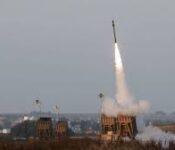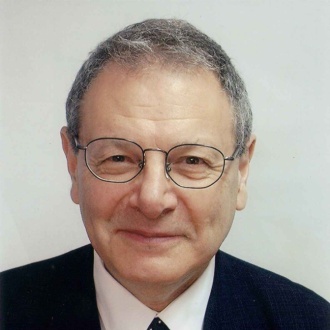Sukkot: Public Displays of Jewish Pride
Inside Outside
I know you are Jewish at home, but are you comfortable with your Judaism on the street? Would you walk home from Shull with a Talit (prayer shawls) on your shoulders? Do you sport a kippah (head covering) when shopping at your local grocery store? Are you Jewish outside or only inside?
Inside Outside, is a fascinating book written by Herman Woulk, in which the American Jewish experience in the early part of twentieth century is described. Judaism was practiced at home and in the Synagogue, but at school, work and play Jews took pains to hide their religion. Their reticence was fueled by concern of what the nations might think. Would public demonstrations of pride in our identity, traditions and beliefs fuel anti-Semitic sentiment? Rather than risk a negative result North American Jews largely opted for a private religious posture.
Identity Erosion
The problem with hiding our faith is that we soon come to sense that something might be wrong with it. If all were right with our faith there would be no need to hide it. The original immigrants, who hid it for legitimate reasons, maintained a passionate if private relationship with G-d. Their children, who were raised to think and behave like non Jews on the street and keep their Judaism a dirty little secret at home, came to identify with and think like the non Jew. The views of the emerging generation were formed more by prevailing political atmospheres than their parents’ old world opinions. They learned to shed their home bred religious perspectives and adopt the modern and more popular perspectives of their peers.
The first sacrifice was religious practice. Knowing that Shabbat and Kashrut would form a barrier against their acceptance into modern society, this practice was the first to go. Sadly, it was not the last; slowly they also abandoned their faith. With time their Jewish pride eroded and, soon after, their identity. It reached a point that Jews were afraid to stand up for Jewish rights. Jews were on the front line of the Vietnam War protests and the first to march in support of black civil rights. But when it came to the Holocaust, Jewish religious rights in America or the existential rights of Jews in their own homeland the silence of American Jews was deafening. This was a silence of fear; fear of rocking the boat. Fear of awakening the ugly specter of anti-Semitism in America.
Standing Tall at the UN
It was a breath of fresh air when Mr. Netanyahu,  Prime Minister of Israel, spoke last Thursday from the United Nations rostrum with passion and eloquence in defense of Jewish rights. He spoke with pride in the very room that filled his predecessors with fear. He words were a clarion call for truth and through him the Jewish people finally found a voice. It was a cathartic moment for the Jewish collective; Jews came away feeling that something that needed saying for a long time had just gotten off their chest.
Prime Minister of Israel, spoke last Thursday from the United Nations rostrum with passion and eloquence in defense of Jewish rights. He spoke with pride in the very room that filled his predecessors with fear. He words were a clarion call for truth and through him the Jewish people finally found a voice. It was a cathartic moment for the Jewish collective; Jews came away feeling that something that needed saying for a long time had just gotten off their chest.
I, for one, was not surprised when Netanyahu later recounted that his inspiration for the speech was the Lubavitcher Rebbe O”BM. Twenty five years earlier when he was first appointed Ambassador to the United Nations Nitanyahu called upon the Rebbe. It was the night of Simchat Torah and the Rebbe was surrounded by thousands of Chassidim who awaited the commencement of the celebrations. The Rebbe talked to Netanyahu for forty minutes and communicated many messages. One message that resonated more than others was the need to light the candle of truth.
The Rebbe called The United Nations a house of darkness that propagates lies as if they were truth. When oft repeated, lies take on a veneer of legitimacy that makes one hesitate to counter them. The Rebbe enjoined Netanyahu to remember the nature of darkness; no matter how intense, darkness always recedes before light. Your mission, concluded the Rebbe, is to light a candle of truth at all times; even as you stand at the rostrum of the house of darkness, speak the truth and the lies shall fall away.
Jewish Pride
This advice fit with the Rebbe’s general outlook. The Rebbe always counseled public displays of Jewish pride. The purpose of these displays was not to score political points or draw undue attention. It was to affirm our faith in our own minds. To display your faith in public requires absolute belief and commitment. Pushing back against intimidation and standing tall for Jewish pride was the Rebbe’s antidote to the malaise that was eroding the integrity, observance and faith of American Jewry.
The Rebbe was determined to stop the bleeding. He took the initiative to bring Judaism to the malls and street corners of American Jewish communities. Finding a Chabadnik on a busy street distributing Jewish paraphernalia and inviting Jews to put on Teffilin is no longer an odd scene. Jewish Mitzvah Mobiles (or as the Rebbe preferred to call them, tanks in the war against assimilation) are now a common spectacle on the wide boulevards of Jewish metropolises. Jews who were not practicing Judaism at home now have their Judaism delivered to them on the street. Finding the fortitude to hear the Shofar on the street or wave a Lulav on the train strengthens our Jewish kernel and allows our soul to blossom.
Sukkot = Outdoors
This approach is the focus of Sukkot, the tabernacle festival. Rosh Hashanah and Yom Kippur are days of awe when Jews congregate indoors; the Synagogues are full and the streets are empty. But so as to prevent us from thinking that Judaism is the domain of the Synagogue and that there is no room for Jewish pride on the street, the Torah instructs us to follow the Days of Awe with Sukkot – the tabernacle festival.
During this festival Jews walk the street with Lulav (palm frond) in hand; we carry it with pride, rejoicing in the knowledge that we were granted a good new year. We move into outdoor huts that are erected especially for this occasion. When the Temple stood in Jerusalem, Jews would march from the Temple to the Shiloah pool where water was collected for their festive libations. The drawing of water was a joyous occasion marked with outdoor song, dance and intense merrymaking.
Sukkot is an outdoor holiday; a time to affirm our belief in G-d and declare that we are not ashamed. We don’t tuck it away indoors; we are comfortable with our faith indoors and out. May this holiday bring great rejoicing. In its wake may we be strengthened in our faith and practice in the coming new year.
Questions For Further Discussion
Was Netanyahu right to discard diplomatic language and speak bluntly at the world’s highest diplomatic gathering?
Do you agree that outer displays of Judaism enhance inner conviction?
Can you offer a reasoned explanation for your position?
You are invited to post your comment.
Tags: identity, pride


























